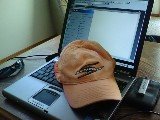Blind passes are not good. Passing the puck by slapping at it with your stick is not controlling the puck. Tossing the puck behind you out into the open ice without looking to put it on our teams sticks works to the other teams advantage. Some players do this as an attempt to avoid being checked. You need to keep control of the puck until you can make a good pass. Keep two hands on the stick for strength and leverage - not just one hand. Get you knees bent and prepare for a check by using the boards to absorb the impact. If you are in open ice get low and look for your team mates to take the pass.
Control the middle of the ice. Work hard to maintain control of the puck in this area. Don't let the other team force you out of this area. Don't let the opposing team touch the puck in this area. Use your forchecks and backchecking to pressure the puck to force a turn over. Keep the other team to the boards when in our defensive end.
Wingers must cover the other teams defensemen when in our end of the ice. This will take away point shots and could result in a turn over and break away for our team.
Get the puck out of our defensive end. Use hard shots using the boards/glass to put the puck around the opposing teams defense. Our team should be moving to break out and pick up the puck in the neutral zone. Try breaking out through open ice in our end, but do not throw the puck in front of our own net/slot. Get the puck off the ice when trying to shoot the puck or pass the puck past the opposing defense.
Put the puck deep into the offensive zone when the other team is pressuring the puck. If there is no pressure take the puck to the net or shoot on goal - but look for rebounds. (step back a few feet from the goalie to get a better shot on goal with the rebound)
Shoot Around the goalie, not at the goalie. Make the goalie move. Pick a target such as just inside the most viewable post.(if the goalie goes down shoot high - if he stays up shoot low)
Always look for lost pucks - What this means is our team can lose the puck on a run to the net. The same thing can happen to the opposing team. poke checks, body checks, and over skating create these loose pucks. We want them all! Look for the loose pucks and take them, but call it so that we do not have three players all going for the same puck. This creates big traffic jams that only slow us down.
Skate hard around and through the opposing team. If you are skating well enough keeping the puck away from your opponents stick you may find that you slide right past them. Remember when you have control of the puck - your the boss.
Pass Pass Pass. We are a team and should work together. However that said, if your teammate is not open or awake, hold onto the puck and drive forward towards the opposing teams goal. Look Look Look for your teammates - they should move to get open. Make good passes and be ready to receive the pass.
Use all the ice. Don't overload in our defensive zone or the neutral zone. Sometimes we can overload on our offense by setting up triangulation to move the puck around the other team while on the attack.
Use your defense to move the puck around + Rotate wingers with the defense - let them send the puck into the corners and also take shots on the goal - look for rebounds and tip ins.
Shoot and pass around the other team. Don't shoot right into the other teams lap. Look up and move your body and puck around the other team.
NO CHECKING FROM BEHIND!!
Coach Heldt's Notes
Saturday, January 27, 2007
Passing and Shooting
Posted by Coach Heldt at 1:18 p.m.
Labels: Passing and Shooting
Subscribe to:
Post Comments (Atom)


3 comments:
"Taking the experience level of the official into account, if the check from behind is truly unavoidable (the check is imminent and the player being checked obviously turns to create a check from behind), then there may be no infraction on the play. It can’t be emphasized enough that if there is the slightest doubt as to an unavoidable check from behind, then it’s a penalty"
quoted from USA Hockey website
A cross check to the player's back is not considered an unavoidable accident in my book.
Checking to knock the player off the puck is not the same as checking to inflict injury.
i think orangeice is right
Post a Comment